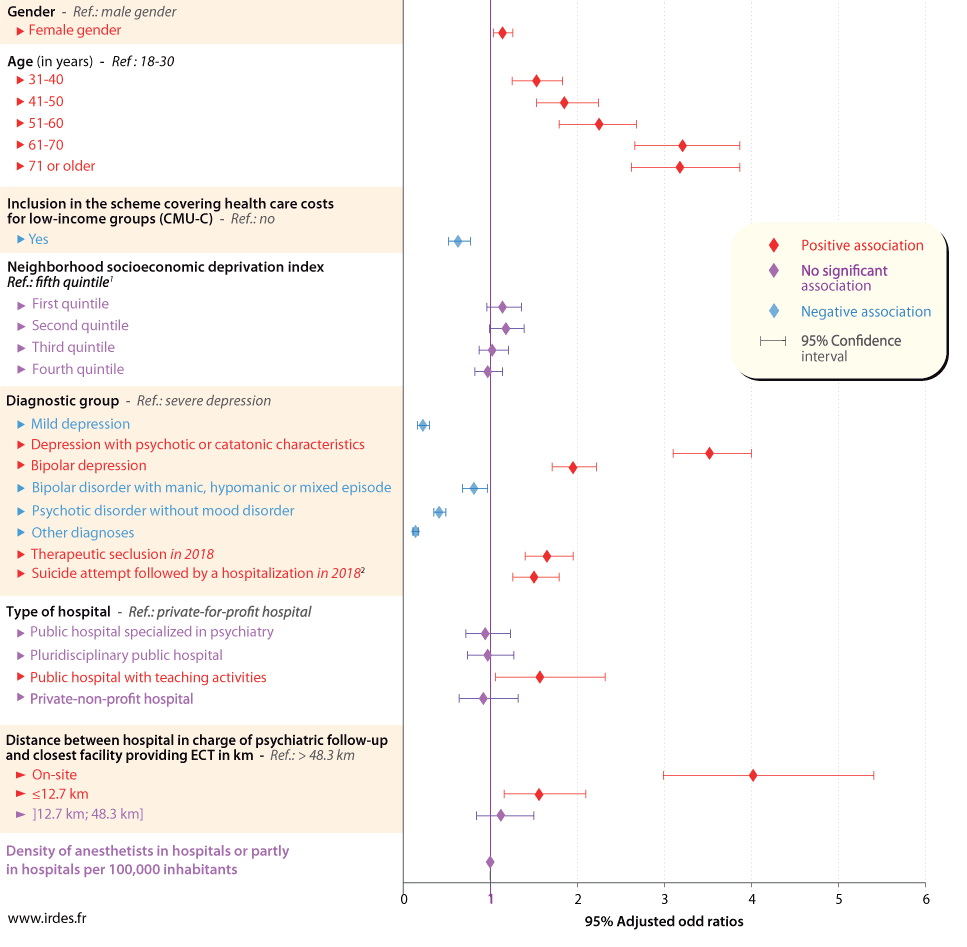CHART OF THE MONTH
Factors associated with the use of electroconvulsive therapy (ECT) in France
April 2022

1. The higher the quintile, the higher the deprivation.
2. Hospital stays identified by at least one secondary diagnosis with an ICD-10 code in X60 to X84, whatever the main diagnosis, according to the methodology defined by ATIH (Agence technique de l'information sur l'hospitalisation, Technical Agency for Information on Hospital Care) and Santé publique France.
Scope: Adult patients hospitalized at least one day full-time in general psychiatry in mainland France in 2019 (n=298,966) mainly followed within 468 hospital facilities.
Sources: RIM-P (Recueil d'informations medicalisé en psychiatrie) and PMSI-MCO, (Programme de médicalisation des systèmes d'information), 2019 (or 2018 for indicators related to severity markers: seclusion and suicide attempt).
Reading: All other things being equal, ECT use is significantly more frequent in women (more often affected than men by severe or complex depression), older people and those with severe depression. It is also significantly associated with patients followed up in public hospitals with teaching activities in comparison to other types of hospitals. This finding may be linked to the hyperspecialization of the practice, easier access to anesthetists, and easier diffusion of national clinical guidelines in hospitals with teaching activities.
Taken from Lecarpentier P., Gandré C., Coldefy M., in collaboration with Ellini A. "Use of Electroconvulsive Therapy for Individuals Receiving Inpatient Psychiatric Care on a Nationwide Scale in France: First Findings", IRDES Reports (Rapports de l’Irdes), 585, April 2022. (Report in French)
See also: Lecarpentier P., Gandré C., Coldefy M., Ellini A., Trichard C. (2022). "Use of Electroconvulsive Therapy for Individuals Receiving Inpatient Psychiatric Care on a Nationwide Scale in France: Variations Linked to Health Care Supply". Brain Stimulation, vol 15, n° 1, 2022/01, 201-210.